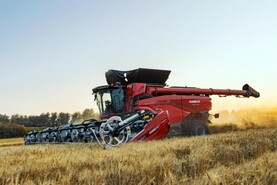The first week of winter barley harvesting suggests a better-than-average run of yields for the country.
Field yields range from 3t/ac to 4.75t/ac, but local averages appear to range from 3.5t/ac to just over 4t/ac.
Heat-driven ripening often means that crop ripening is relatively uneven, and many growers report parts of fields very ripe with other areas being quite green.
This is affecting average moisture levels and also means most straw needs to be left for a day or two before baling.
Some of the poorer yields were from the first crops cut, or from problem fields, and many growers report better performance as harvesting progresses. The good weather has accelerated the pace of harvesting and the high temperatures have quickly pulled down grain moisture levels.
Lower moisture means less weight across the weighbridge. Growers get no benefit from moisture levels below 16.5%, while some loads are now down to 12% moisture.
Grain quality is generally very good to excellent, with specific weights generally running at 65 to 70KPH. However, a few poorer crops did have low specific weight early on.
While most growers now have some winter barley cut, others are only starting this week.
The first of the winter oats have also been harvested, with yields around 3.3-3.5t/ac at moisture levels below 14% and KPH above 54.
Markets
Meanwhile, international prices began to move upwards again this week and this seems likely to influence green prices.
This week, Glanbia offered €175/t for green barley – up from €139/t last year, both exclusive of bonuses.
As things stand, it is possible that green price levels may be at least €20-€25/t higher than last year.
Straw
Straw volumes are good, with 12 to 15 4x4x4 round bales reported from fields that are now baled. Growers report prices of €20-€24 per bale out of the field for round 4x4x4s or €60/bale for 8x4x4s.






 This is a subscriber-only article
This is a subscriber-only article










SHARING OPTIONS: